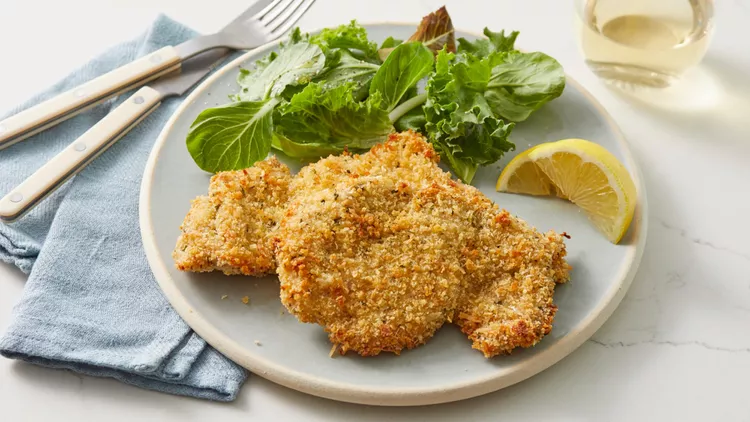The Simple Swap That Completely Revived My Weeknight Chicken Routine

Sometimes, all it takes to breathe new life into a familiar recipe is one small, smart tweak. For me, that moment of culinary discovery came with a dish that had long been a weeknight standby: Oven-Fried Chicken Thighs.
This meal had been part of my dinner rotation for so long that I can’t even remember when it first made its way into my kitchen. What kept it in steady rotation was its satisfying crunch — all the texture of classic fried chicken without the heavy mess (or extra calories) that come from deep-frying. The secret? Baking the chicken on a wire rack, which lets hot air circulate around each piece, crisping up the panko breading on every side.
A New Twist from a Kitchen Legend
Recently, in a quest to shake things up, I stumbled upon a recipe from none other than Ina Garten. Her Crispy Mustard-Roasted Chicken caught my eye. Although her version calls for a whole chicken, I decided to apply her flavors to my usual boneless, skinless chicken thighs, adjusting the cooking time accordingly.
In the end, my method still gave the better crunch factor, but Ina’s flavor profile was a revelation: bright lemon zest, fragrant thyme, garlic—and, the real game-changer—Dijon mustard.
Dijon Mustard: The Breading Upgrade I Didn’t Know I Needed
Ina’s trick is brilliantly simple. Instead of using the traditional beaten egg to help the breadcrumbs stick, she coats the chicken in Dijon mustard. Not only does it act as an adhesive for the crispy panko, but it also brings a subtle, tangy punch to every bite — something a plain egg wash simply can’t offer.
Given how high egg prices have been lately, this swap feels even more genius. And it’s adaptable, too. Ina’s original method combines equal parts Dijon mustard and white wine to thin the mixture for easier coating. But in my kitchen, I’ve had just as much success using a little mayonnaise, chicken stock, or even a splash of water to loosen up the mustard when needed.
Versatility Beyond Chicken Thighs
The beauty of this Dijon technique is that it’s not limited to chicken thighs. Since making the switch, I’ve tried it with other proteins — salmon, pork tenderloin, and even pork chops all take well to the mustard coating. You can also easily swap the thighs for chicken tenderloins or strips if you prefer white meat over dark.
No matter what protein you choose, the process remains beautifully simple: brush on the Dijon mixture, dredge in panko, and bake until golden and irresistible. The end result is a dish that’s full of flavor and crunch, but with none of the fuss that usually comes with traditional frying.
A Fresh Take on a Beloved Classic
What I love most about this discovery is how it reminds me that even my oldest, most reliable recipes have room for growth. Sometimes all it takes is a little curiosity—and maybe a little help from a culinary icon like Ina Garten—to see things in a new light.
Now, my weeknight oven-fried chicken feels exciting again, with an extra depth of flavor that makes the dish taste far more sophisticated than the effort it requires. And knowing that this Dijon trick works with a variety of proteins just means more delicious possibilities are on the horizon.
It’s a small change, but one that has totally transformed the way I approach breading and baking. And frankly, I don’t see myself going back to the egg wash any time soon.


